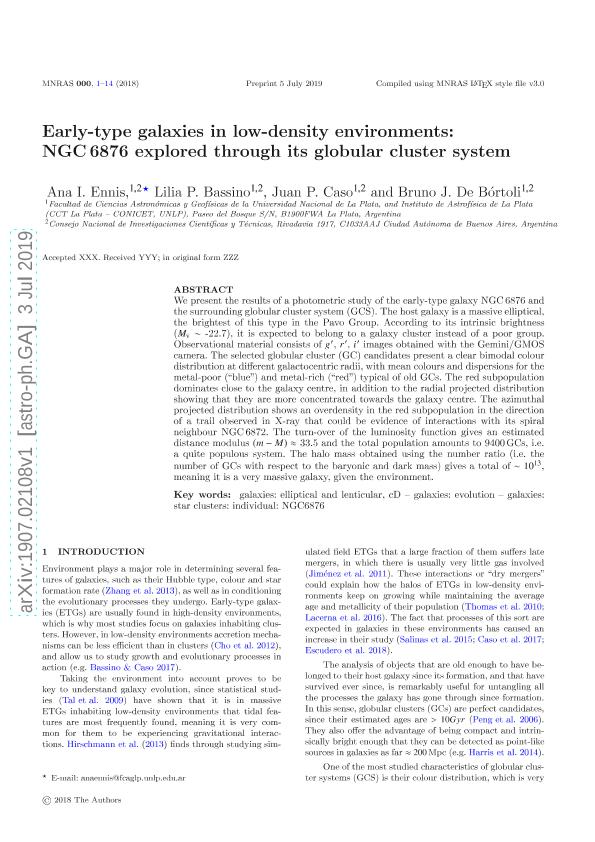Artículo
Early-type galaxies in low-density environments: NGC 6876 explored through its globular cluster system
Fecha de publicación:
09/2019
Editorial:
Oxford University Press
Revista:
Monthly Notices of the Royal Astronomical Society
ISSN:
0035-8711
e-ISSN:
1365-2966
Idioma:
Inglés
Tipo de recurso:
Artículo publicado
Clasificación temática:
Resumen
We present the results of a photometric study of the early-type galaxy NGC 6876 and the surrounding globular cluster (GC) system. The host galaxy is a massive elliptical, the brightest of this type in the Pavo Group. According to its intrinsic brightness (Mv ∼ −22.7), it is expected to belong to a galaxy cluster instead of a poor group. Observational material consists of g, r, i images obtained with the Gemini/GMOS camera. The selected GC candidates present a clear bimodal colour distribution at different galactocentric radii, with mean colours and dispersions for the metal-poor (‘blue’) and metal-rich (‘red’) typical of old GCs. The red subpopulation dominates close to the galaxy centre, in addition to the radial projected distribution showing that they are more concentrated towards the galaxy centre. The azimuthal projected distribution shows an overdensity in the red subpopulation in the direction of a trail observed in X-ray that could be evidence of interactions with its spiral neighbour NGC 6872. The turnover of the luminosity function gives an estimated distance modulus (m − M) ≈ 33.5 and the total population amounts to 9400 GCs, i.e. a quite populous system. The halo mass obtained using the number ratio (i.e. the number of GCs with respect to the baryonic and dark mass) gives a total of ∼1013, meaning it is a very massive galaxy, given the environment.
Archivos asociados
Licencia
Identificadores
Colecciones
Articulos(IALP)
Articulos de INST.DE ASTROFISICA LA PLATA
Articulos de INST.DE ASTROFISICA LA PLATA
Citación
Ennis, Ana Inés; Bassino, Lilia Patricia; Caso, Juan Pablo; de Bórtoli, Bruno Javier; Early-type galaxies in low-density environments: NGC 6876 explored through its globular cluster system; Oxford University Press; Monthly Notices of the Royal Astronomical Society; 488; 1; 9-2019; 770-781
Compartir
Altmétricas




